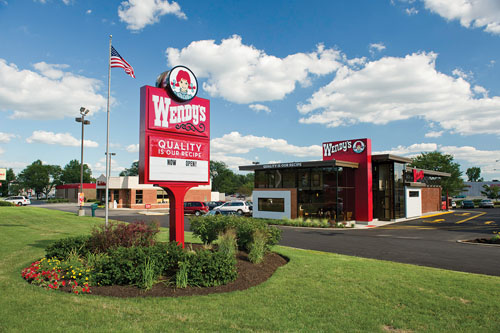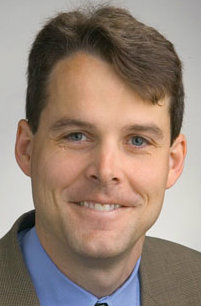 As vice president of riskmanagement for The Wendy's Co., Andy Kuchar has within his purviewmore than 40,000 employees working at 1,427 restaurants. Chargedwith the safety of that many workers and the tens of millions ofguests the chain serves each year, working proactively is paramountto prevent injuries and ensure that proper coverage is inplace.
As vice president of riskmanagement for The Wendy's Co., Andy Kuchar has within his purviewmore than 40,000 employees working at 1,427 restaurants. Chargedwith the safety of that many workers and the tens of millions ofguests the chain serves each year, working proactively is paramountto prevent injuries and ensure that proper coverage is inplace.
The Wendy's Co. owns approximately one-fifth of its restaurants;the remainder are franchises. Each franchise agreement includes theinsurance coverage needs that every Wendy's restaurant is requiredto carry, including General Liability, Workers' Compensation,Excess Liability and Property cover.
|Kuchar's office utilizes a preferred insurance program forfranchisees through Marsh, which brokers all of its placements—butsome of those insurers don't write in certain parts of the country.As such, Wendy's requires a network of carriers to cover all itsbases, with multiple carriers in each market competing for thebusiness.
|“Some of the large programs, such as our Property and ExcessLiability, have multiple insurance carriers participating,” henotes. “That said, AIG and ACE are our two most significantinsurance partners: AIG on the property and executive-risk side andACE on the casualty-risk side.” While the company is self-insuredin 18 states including Florida, New York, Georgia and Louisiana,its insurance programs are not self-administered in any of them butby its TPA, Sedgwick.
|Wendy's risk management squad also includes two risk analysts,three casualty claims associates, three Workers' Compensationclaims associates and a claims manager, all based in its corporateheadquarters in Dublin, Ohio. Kuchar is directly responsible forall coverage lines for the Wendy's Co., including D&O, Workers'Comp, General Liability, Excess Liability, Employment PracticesLiability, Property and others, as well as several company-relatedorganizations—two adoption-related charities (established byWendy's founder and former CEO Dave Thomas, who was adopted when hewas six months old) and the restaurant chain's political actioncommittee (PAC).
|When it comes to claims, Kuchar reveals, about 70% of therestaurant chain's incurred costs stem from Workers' Comp, while30% fall under General Liability. The most significant exposuresfor both Wendy's customers and its employees are not extraordinaryin the fast-food space: For guests, it's the usual slips, trips andfalls. For employees, it's sprains, burns and other typicalfood-prep injuries.
|“Being a restaurant company, maintaining the highest degree offood safety is one our primary concerns,” he says. “If you'recooking in your own house, how do you get hurt?” he muses. “Thoselosses are almost inherent to what you do, and that's thechallenge. Like a lot of disciplines, basic day-to-day 'blockingand tackling' executed well seems to yield the greatestresults.”
|Which is not to say they happen often, according to Kuchar. Andwhile any chain of Wendy's stature will attract a handful ofunsubstantiated lawsuits per year, “the overwhelming majorityaren't genuine,” he says. “I was running through the math one dayto see what the magnitude [of such claims] was, and 90 millionpeople [in the U.S.] every year walk in to a Wendy's that weoperate. And if you look at the number of accidents that happen,it's actually amazing—about one customer incident per milliontransactions.”
|Similarly, on the Workers' Comp side, Kuchar is encouraged tosee just how low the accident rates really are. The math works outto more than one million hours worked before the company gets to ameaningful number.
|“We have a strong emphasis on making certain that our employeeshave the right personal protective equipment available to minimizethe risk of injury,” Kuchar says, citing as examples special meshgloves that employees wear while slicing tomatoes, and box cuttersoutfitted with retracting blades to help prevent cuts.
|One of Wendy's signature menu items is its chili, which due toits temperature requires careful preparation. “We have specificprocedures and equipment we use to make and move the chili tominimize the risk of a burn,” he says.
|Long, heat-resistant gloves and special aprons are used for thispurpose, along with a special cart that's used to move the steamingdish from the station where it's cooked to the area where it isserved.
| Despite everyone's best efforts,employee accidents like cuts and burns still happen, he says. “Whenthey do occur, we work hard to help the injured employee getappropriate medical care and return to work as quickly aspossible.”
Despite everyone's best efforts,employee accidents like cuts and burns still happen, he says. “Whenthey do occur, we work hard to help the injured employee getappropriate medical care and return to work as quickly aspossible.”
To that end, Wendy's risk management program's policy is toreturn employees as soon as possible, working within therestrictions provided by their treating physician and itsTPA.
|“There are occasions when we can't accommodate an employee'swork restrictions because it might create a safety hazard for otherrestaurant employees,” he adds. “For example, any employee couldneed a walker while they recover from their injury, but a walkerwould be difficult to navigate around in the back of a restaurant.”In those cases, alternate duties are available.
|Just a few years ago, Wendy's refocused its return-to-workefforts, essentially making certain return policies wereimplemented across the board. Previously, as Kuchar explains, “Ifsomeone needed to sit on a stool for a week because they had a leginjury, some restaurants would have them at pick-up window, whileothers wouldn't.”
|At that time, return-to-work decisions were made primarily atthe restaurant level, on a case-by-case basis; now, therisk-management department partners with an individual restaurant'soperations team to bring more consistency to such decisions. Thesedays, he says, such policies are the same in Georgia as they are inNew York. That effort has yielded significant reductions inwork-related injury costs.
|In terms of teaching employee safety, like many companies,Wendy's has leveraged technology to deliver a large portion oftraining online through manager workstations via its intranetsite.
|Rather than approach safety and security as separate trainingmodules, Kuchar notes, both components are integrated across thetraining modules. “We hope that sends the message that safety andsecurity considerations are part of everything we do, not anafterthought,” he says.
|PropertyCasualty360.com
Complete your profile to continue reading and get FREE access to Treasury & Risk, part of your ALM digital membership.
Your access to unlimited Treasury & Risk content isn’t changing.
Once you are an ALM digital member, you’ll receive:
- Critical Treasury & Risk information including in-depth analysis of treasury and finance best practices, case studies with corporate innovators, informative newsletters, educational webcasts and videos, and resources from industry leaders.
- Exclusive discounts on ALM and Treasury & Risk events.
- Access to other award-winning ALM websites including PropertyCasualty360.com and Law.com.
*May exclude premium content
Already have an account? Sign In
© 2024 ALM Global, LLC, All Rights Reserved. Request academic re-use from www.copyright.com. All other uses, submit a request to [email protected]. For more information visit Asset & Logo Licensing.






